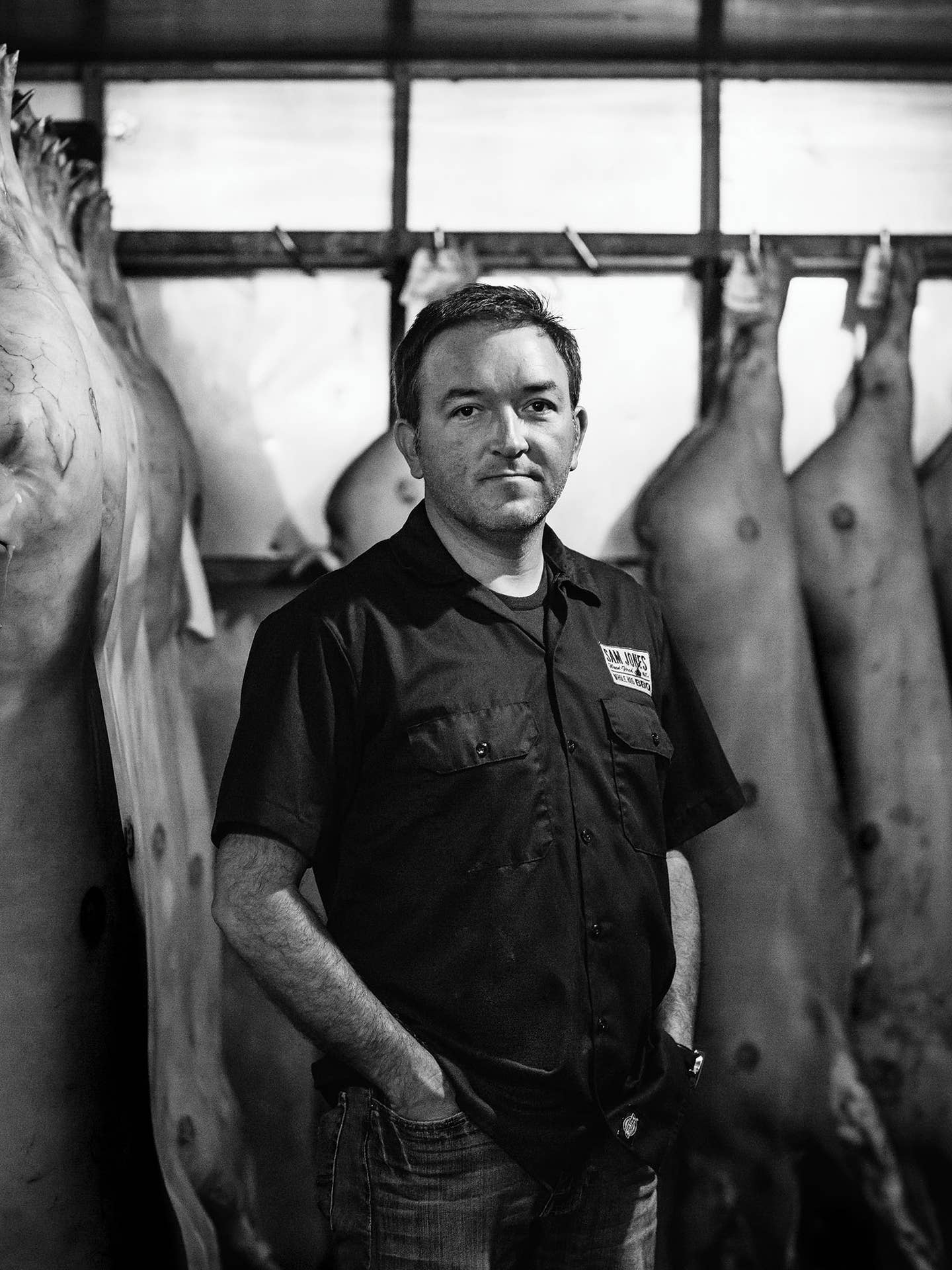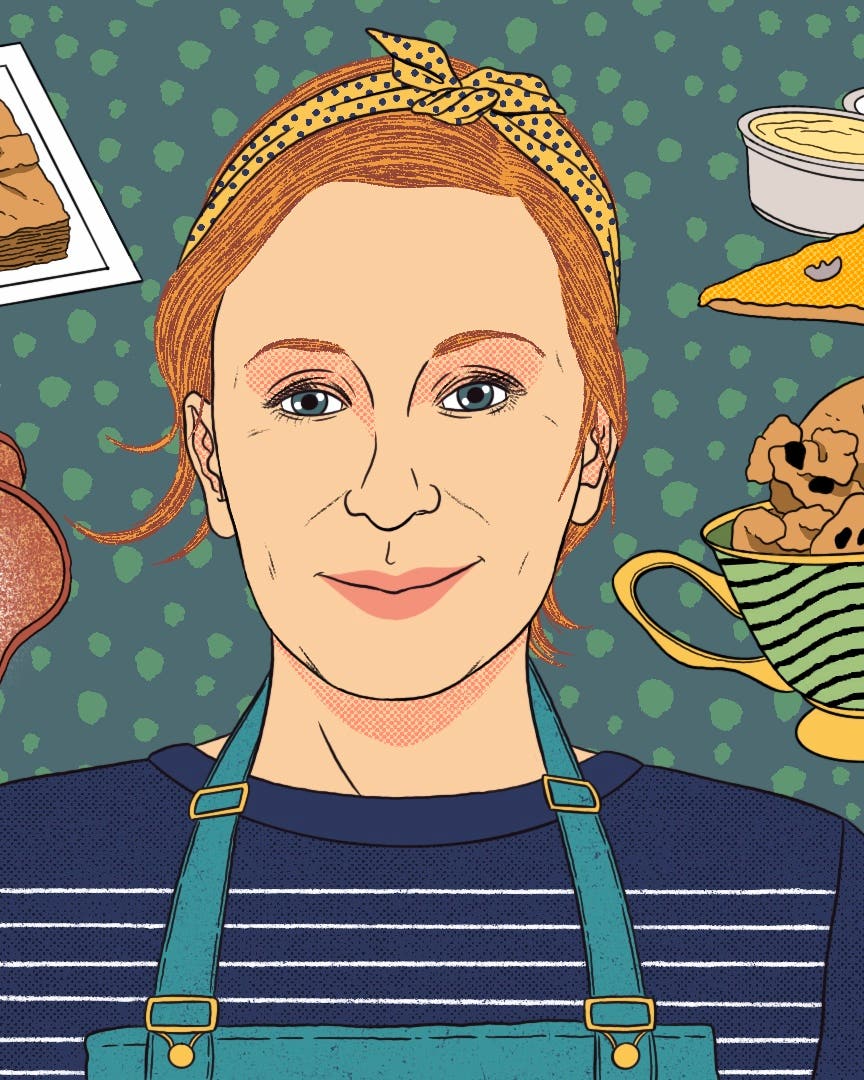
Why Pitmaster Sam Jones Won’t Give Up Whole Hog Barbecue, “The Most Financially Irresponsible Thing You Can Do”
The third-generation pitmaster of Ayden’s Skylight Inn dishes on the Carolina legacy
Who: Sam Jones
Where: Skylight Barbecue, Ayden, North Carolina
The tradition: Whole-hog barbecue
My father used to say he put pig grease in my milk bottle when I was a baby to make sure it was in my blood. In July of 1945, my grandfather opened Skylight Barbecue, a joint specializing in whole-hog barbecue cookery, which means instead of starting with a Boston butt or a shoulder, you're smoking a full pig, simply gutted and seasoned. I run Skylight today.
Whole-hog cooking is the most financially irresponsible thing you can do. The margins are bad—the ribs, the spine, the blade bones, the shanks—all of that is waste. Compare that to a butchered piece of meat, where the yield is almost 100%. Plus, there are more fuel costs than other barbecue methods, though, for me, not cooking over wood would be like Billy Graham starting a satanic church.
So why do it? First off, tradition. North Carolina is known for whole-hog cooking, and my family has been doing it for generations. While our customers may only see chopped-up meat on a bun, I know the work and effort that goes into each sandwich, the care it takes to make sure each part of the pig is cooked evenly, the hours each night our guys are out there keeping the fires going at precisely the right temperature, just as it's been done for centuries. It's part of the state's legacy. (There are only five or six hours a day when someone isn't manning the smokers.) All that aside, cooking whole hog results in a tastier final product. You have the belly meat, which is like fatty bacon, chopped up together with the ham meat, which is a little leaner than the front two quarters, and the carcass itself holds the moisture and the fat during cooking. The result is a big, juicy pile of meat, dripping with flavor that soaks into the bun.
For such an ancient cooking tradition, it's remarkably technique-heavy, and you can't replicate it any other way. There are no shortcuts.
My grandfather was no longer at the helm when I started helping out at the restaurant, sweeping up floors at around 9 or 10 years old. But he would personally cook one pig a year, at harvesttime, to feed to the farmers in the area. Once he looked at me and said, "You've got two ears and one mouth for a reason: You can learn something."
So I made sure to shadow him closely. When it came time, years later, for me to take over the family business, sure, I could have pivoted and started cooking cuts of meat instead of the whole animal. But, I figured, don't put corners on a wheel that's rolling.
Keep Reading
Continue to Next Story










